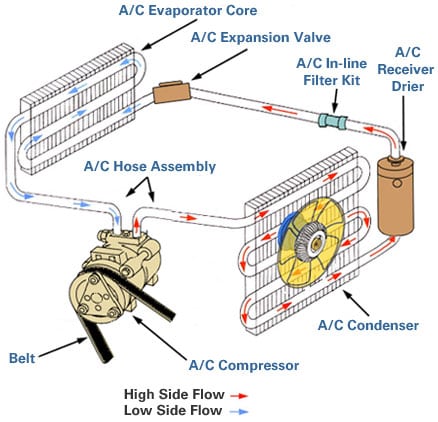by Perry Hua at TransmissionRepairGuy.com
No one likes the sound of “transmission problems.” It doesn’t sound very pleasant or easily solvable, as the person facing transmission problems in all probability doesn’t know very much about it. But in most cases, transmission problems can be pin pointed to a few key causes, which have to do with the transmission fluid. Hopefully you already know how important transmission fluid is, as it helps to provide fluid pressure as well as lubricating and cooling functions. With that said, it’s easy to see how many problems can develop because of inadequate fluid. Overheating is a transmission’s worst enemy, and fluid that fails to lubricate or cool the transmission is going to lead to even bigger problems down the road. Today we will go over common transmission problems that are easy to fix, which includes low fluid levels, ineffective fluid, leaks, and transmission slipping. You can find out how to fix any of these problems easily by doing a search online.
Low fluid levels
One of the most common problems you’ll see are low fluid levels, which often causes an array of additional problems such as overheating and transmission slipping. Although low fluid levels can be caused by a leak, it can also be caused by driving extensively in high temperatures. In cases of low fluid levels, you will just need to add more. What you need to do is check the transmission fluid, which will require the vehicle to be running. Prop the hood up once the engine is warm and pull out the transmission dipstick. You can then check whether the fluid is between the two marks on the dipstick. Any reading below the lower mark will require you to add more fluid. Simply add the recommended fluid slowly until the reading is between the two marks and make sure not to overfill!
Transmission leaks
A transmission leak can be one reason behind low fluid levels, and you will experience it in one of two ways. Either a big amount of fluid is lost at once or it will slowly drip until you notice it. A significant loss of transmission fluid can often be noticed while you are driving, and can happen when a sharp object on the road punctures the transmission pan or cooler lines. Your transmission will often behave erratically when this happens. Slow leaks are often the cause of loose pan bolts, blown seals, or a worn pan gasket. Look under your driveway for any signs of reddish stains. If you have a transmission leak, all you need to do is isolate the cause of the problem and replace the defective parts.
Ineffective fluid
Ineffective fluid is what you get when you leave fluid running for too long. All transmission fluids have a shelf life and will not last forever, and it’s your responsibility to know when to have it changed, much like engine oil. When you check the fluid, any burnt smells or dark colors are indications that the fluid has lost its usefulness and needs a changing. Don’t leave obsolete fluid running for too long or else it can lead to transmission failure soon. Automotive experts recommend changing the transmission fluid once every 30,000 to 60,000 miles as this helps to extend the life of your transmission. You should also consider using synthetic fluids offered by aftermarket brands, as they last much longer and provide better performance and service. Whenever you change the fluid, make sure that the filter is replaced as well as the filter helps to trap dirt and pollutants.
Transmission slipping
You’ve probably heard of transmission slipping before, and this problem often occurs because of low fluid levels or ineffective fluid. Yup, did you happen to notice that the most common problems are caused by issues with the fluid? It’s no coincidence, transmission fluid is the lifeblood of a transmission, and any issue with the fluid will often result in an issue with the transmission. If you experience any signs of transmission slipping, your first priority should be to check the fluid as soon as possible. You will simply need to add more fluid in cases of low fluid levels and change the fluid and filter if you find that is is heavily contaminated or smells burnt.







